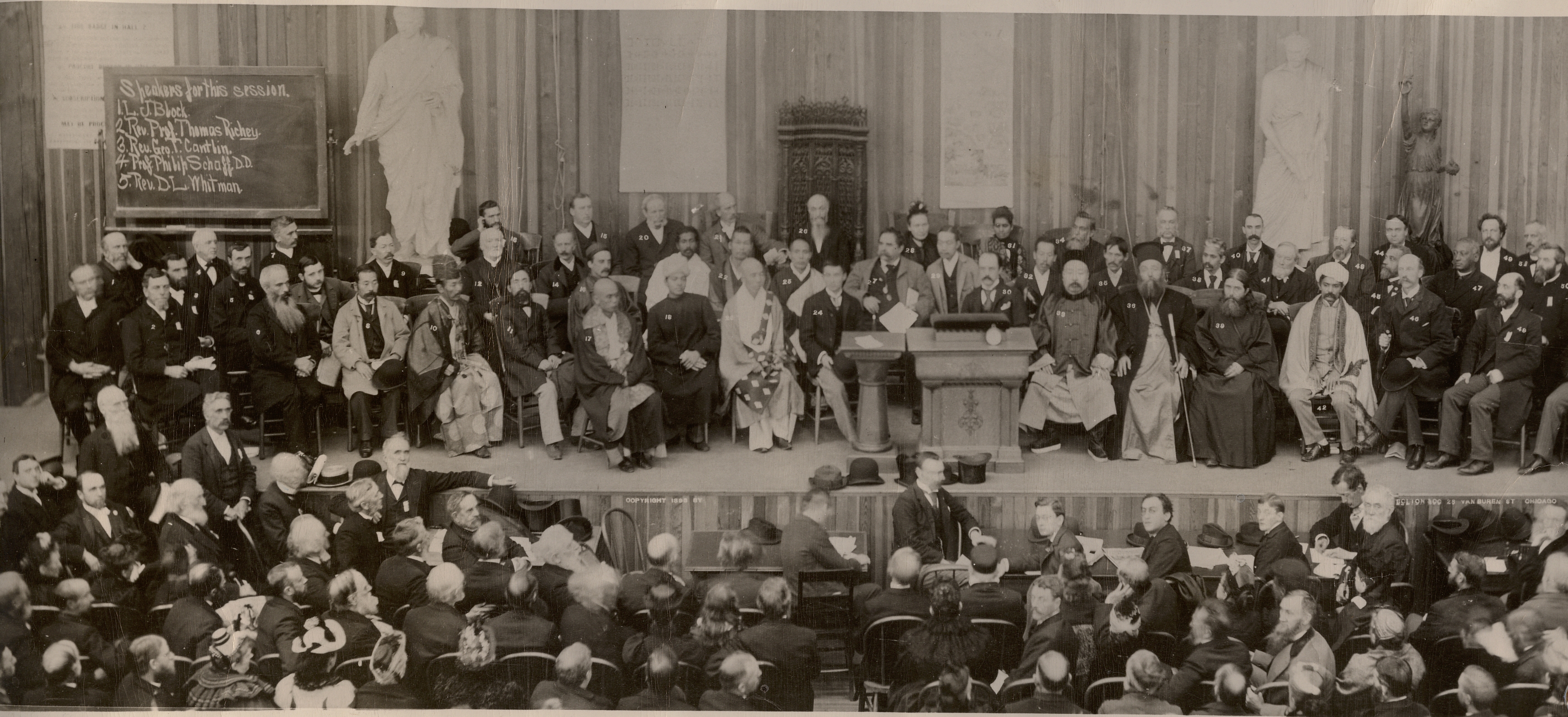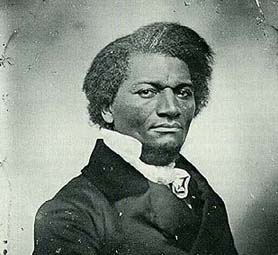
|  |
Frederick Douglass [1818-1895] |
N.B.: This is one of more than 60 web pages presenting -- in chronological order -- physical monuments & selected events related to one or more famous peacemakers. For others in the series, see names in red on web page for Famous Peacemakers.
Frederick Douglass (born Frederick Augustus Washington Bailey) [1818-1895] was an American social reformer, orator, writer & statesman. After escaping from slavery, he became a leader of the abolitionist movement, gaining note for his dazzling oratory & incisive antislavery writing. He stood as a living counter-example to slaveholders' arguments that slaves did not have the intellectual capacity to function as independent American citizens. Many Northerners also found it hard to believe that such a great orator had been a slave. Wrote a classic" autobiography, "Narrative of the Life of Frederick Douglass, an American Slave," in 1845.
Right click image to enlarge.
![]()
| B
I
R
T
H | 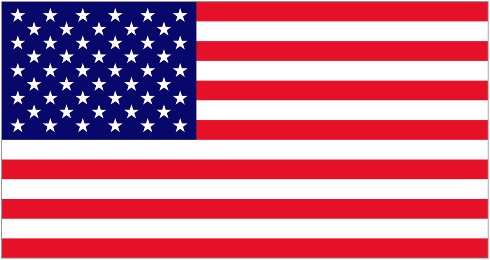  February 1818 - Birth of Frederick Augustus Washington Bailey, Talbot County, Maryland (USA). Between Hillsboro & Cordova. Probably in his grandmother's shack east of Tappers Corner & west of Tuckahoe Creek. Exact date is unknown. He chose to celebrate it on February 14. The exact year is also unknown. On the first page of Narrative of the Life of Frederick Douglass, an American Slave, he stated: "I have no accurate knowledge of my age, never having seen any authentic record containing it." February 1818 - Birth of Frederick Augustus Washington Bailey, Talbot County, Maryland (USA). Between Hillsboro & Cordova. Probably in his grandmother's shack east of Tappers Corner & west of Tuckahoe Creek. Exact date is unknown. He chose to celebrate it on February 14. The exact year is also unknown. On the first page of Narrative of the Life of Frederick Douglass, an American Slave, he stated: "I have no accurate knowledge of my age, never having seen any authentic record containing it."
|
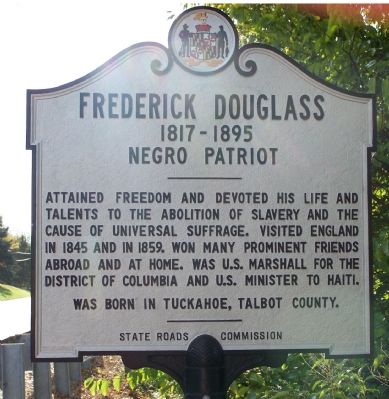

 |   Marker is inscribed: "Attained freedom and devoted his life and talents to the abolition of slavery and the cause of universal suffrage. Visited England in 1845 and in 1859. Won many prominent friends abroad and at home. Was US Marshall for the District of Columbia and US Minister to Haiti.
Was born in Tuckahoe, Talbot County." Marker is inscribed: "Attained freedom and devoted his life and talents to the abolition of slavery and the cause of universal suffrage. Visited England in 1845 and in 1859. Won many prominent friends abroad and at home. Was US Marshall for the District of Columbia and US Minister to Haiti.
Was born in Tuckahoe, Talbot County."
|
1845 - Douglass writes a "classic" autobiography, "Narrative of the Life of Frederick Douglass, an American Slave."
July 19-20, 1848 - Douglass attends first Woman's Rights Convention, Seneca Falls, New York (USA). "A crowd of about 300 people, including 40 men, came from five miles round. No woman felt capable of presiding; the task was undertaken by Lucretia Mott's husband, James Mott. All of the resolutions were passed unanimously except for woman suffrage, a strange idea & scarcely a concept designed to appeal to the predominantly Quaker audience, whose male contingent commonly declined to vote. The eloquent Frederick Douglass [30 years old], a former slave & now editor of the Rochester North Star [50 miles from Seneca Falls], however, swayed the gathering into agreeing to the resolution."
1861-1865 - American Civil War.
1888 - Republican National Convention, Douglass becomes the first African American to receive a vote for President of the United States in a major party's roll call vote.
1889-1891 - Douglass is appointed minister-resident & consul-general to the Republic of Haiti (1889–1891).
1892 - The Haitian government appointed Douglass as its commissioner to the Chicago World's Columbian Exposition. He spoke for Irish Home Rule & the efforts of leader Charles Stewart Parnell in Ireland. He briefly revisited Ireland in 1886.

| H
O
U
S
E
S |   1892 - Douglass constructed rental housing for blacks, now known as Douglass Place, in the Fells Point area of Baltimore, Maryland (USA). The complex was listed on the National Register of Historic Places in 2003.
1892 - Douglass constructed rental housing for blacks, now known as Douglass Place, in the Fells Point area of Baltimore, Maryland (USA). The complex was listed on the National Register of Historic Places in 2003.
|
February 20, 1895 - Death of Frederick Douglass, Washington, DC (USA). At his home. "Douglass attended a meeting of the National Council of Women in Washington, DC. During that meeting, he was brought to the platform & given a standing ovation by the audience. Shortly after he returned home, Frederick Douglass died of a massive heart attack or stroke. His funeral was held at the Metropolitan African Methodist Episcopal Church where thousands passed by his coffin paying tribute."



| G
R
A
V
E |   After February 20, 1895 - Grave of Frederick Douglass, Mount Hope Cemetery, Rochester, New York (USA). After February 20, 1895 - Grave of Frederick Douglass, Mount Hope Cemetery, Rochester, New York (USA).
|



| M
U
S
E
U
M |   1895 - Frederick Douglass National Historic Site, National Park Service (NPS), 1411 W Street, SE, Washington, DC (USA). Home of former slave Frederick Douglass [1818-1895], "the most famous 19th century African American." Unintentional monument at least since Douglass' death in 1895. Now a National Historic Site & Museum. Described on page 21 of "A Traveller's Guide to the Civil Rights Movement" by Jim Carrier (2004). 1895 - Frederick Douglass National Historic Site, National Park Service (NPS), 1411 W Street, SE, Washington, DC (USA). Home of former slave Frederick Douglass [1818-1895], "the most famous 19th century African American." Unintentional monument at least since Douglass' death in 1895. Now a National Historic Site & Museum. Described on page 21 of "A Traveller's Guide to the Civil Rights Movement" by Jim Carrier (2004). 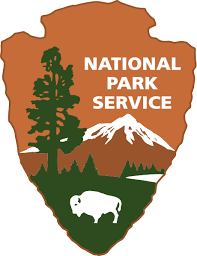
|
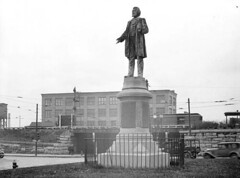
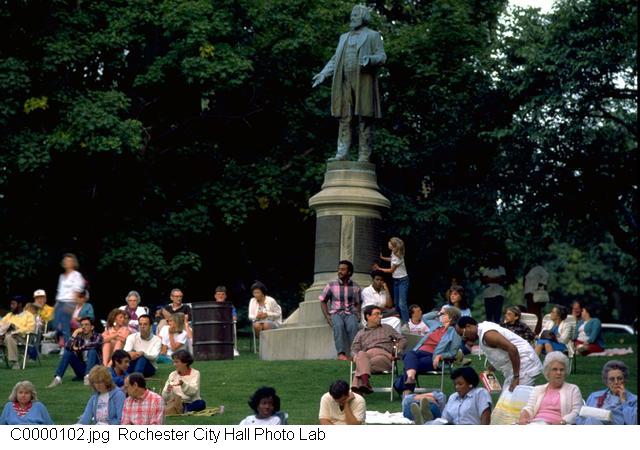


| S
T
A
T
U
E |   1899 - Frederick Douglass monument, Rochester, New York (USA). Made by Sidney W. Edwards. Unveiled in 1899 at Central Avenue & St. Paul Street. It was moved to Highland Park & rededicated on September 4, 1941.
Seen by EWL 15June2015. 1899 - Frederick Douglass monument, Rochester, New York (USA). Made by Sidney W. Edwards. Unveiled in 1899 at Central Avenue & St. Paul Street. It was moved to Highland Park & rededicated on September 4, 1941.
Seen by EWL 15June2015.
|
1921 - Members of the Alpha Phi Alpha fraternity (the first African-American intercollegiate fraternity) designated Frederick Douglass as an honorary member. Douglass is the only man to receive an honorary membership posthumously.

|   1935 - Frederick Douglass Memorial Hall, 2441 6th-Street, NW, Howard University, Washington, DC (USA). "Named in honor of
abolitionist, diplomat & university trustee Frederick Douglass [1818-1895]. Completed under the direction of university architect Albert I. Cassell [1895-1969]. The U-shaped Neoclassical building looks out upon the main yard of the university." 1935 - Frederick Douglass Memorial Hall, 2441 6th-Street, NW, Howard University, Washington, DC (USA). "Named in honor of
abolitionist, diplomat & university trustee Frederick Douglass [1818-1895]. Completed under the direction of university architect Albert I. Cassell [1895-1969]. The U-shaped Neoclassical building looks out upon the main yard of the university."
|
1950 - The Frederick Douglass Memorial Bridge, sometimes referred to as the South Capitol Street Bridge, just south of the US Capitol in Washington DC, was built in 1950 and named in his honor.
1962 - His home in Anacostia (Washington, DC) became part of the National Park System, & in 1988 was designated the Frederick Douglass National Historic Site.
1965 - The US Postal Service honored Douglass with a stamp in the Prominent Americans series.


 
 | M
U
S
E
U
M |   1980 - Women's Rights National Historic Park, 136 Fall Street, Seneca Falls, New York (USA). Upper left image is visitor center. Upper right is "First Wave" sculpture group by Lloyd Lillie. Lower left is Declaration Park. Lower right image shows remains of Wesleyan Chapel, site of the First Women's Rights Convention on July 19-20, 1848. On the second day, 100 women & men signed the "Declaration of Rights & Sentiments." The sculpture includes statues of 20 people:
Mary Ann & Thomas M’Clintock, Lucretia & James Mott, Jane & Richard Hunt,
Elizabeth Cady Stanton, Frederick Douglass, Martha Wright & 11 anonymous participants representing men & women who attended the convention but did
not sign the declaration. Video | Website | 1980 - Women's Rights National Historic Park, 136 Fall Street, Seneca Falls, New York (USA). Upper left image is visitor center. Upper right is "First Wave" sculpture group by Lloyd Lillie. Lower left is Declaration Park. Lower right image shows remains of Wesleyan Chapel, site of the First Women's Rights Convention on July 19-20, 1848. On the second day, 100 women & men signed the "Declaration of Rights & Sentiments." The sculpture includes statues of 20 people:
Mary Ann & Thomas M’Clintock, Lucretia & James Mott, Jane & Richard Hunt,
Elizabeth Cady Stanton, Frederick Douglass, Martha Wright & 11 anonymous participants representing men & women who attended the convention but did
not sign the declaration. Video | Website |  
|
1999 - Yale University established the Frederick Douglass Book Prize for works in the history of slavery and abolition, in his honor. The annual $25,000 prize is administered by the Gilder Lehrman Institute for American History and the Gilder Lehrman Center for the Study of Slavery, Resistance, and Abolition at Yale.
 

|   2001 - "Let's Have Tea" (statues of suffragist Susan B. Anthony & abolitionist Frederick Douglass), Susan B. Anthony Square, Rochester, New York (USA). One block from Susan B. Anthony House. Made by Laotian sculptor Pepsy Kettvong (right image).
Seen by EWL 15June2015. 2001 - "Let's Have Tea" (statues of suffragist Susan B. Anthony & abolitionist Frederick Douglass), Susan B. Anthony Square, Rochester, New York (USA). One block from Susan B. Anthony House. Made by Laotian sculptor Pepsy Kettvong (right image).
Seen by EWL 15June2015.
|

|  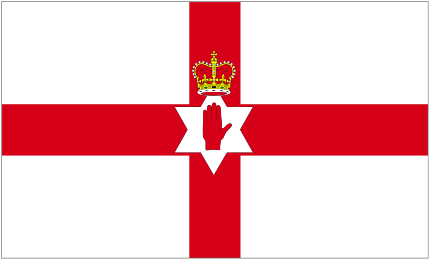 Date? - Frederick Douglass mural, Falls Road, Belfast (Northern Ireland). "On the 'Solidarity Wall', subsequently repainted... The 'solidarity wall' features murals mainly dedicated to peoples/revolutionaries inspired by or with connections to Irish Republicanism (such as the Blanketmen, Palestinians, ETA, Frederick Douglass) and is located close to the newly-rebuilt Falls Road Leisure Centre & the Divis area." Date? - Frederick Douglass mural, Falls Road, Belfast (Northern Ireland). "On the 'Solidarity Wall', subsequently repainted... The 'solidarity wall' features murals mainly dedicated to peoples/revolutionaries inspired by or with connections to Irish Republicanism (such as the Blanketmen, Palestinians, ETA, Frederick Douglass) and is located close to the newly-rebuilt Falls Road Leisure Centre & the Divis area."
|

|   Date? - Frederick Douglass mural, Northumberland Street, Belfast (Northern Ireland). Date? - Frederick Douglass mural, Northumberland Street, Belfast (Northern Ireland).
|

|   October 2001 - Labor History Mural, near the corner of Sixth & Spring Streets, New Bedford, Massachusetts (USA). "Created by Dan Devenny, noted muralist from Belfast (Northern Ireland). October 2001 - Labor History Mural, near the corner of Sixth & Spring Streets, New Bedford, Massachusetts (USA). "Created by Dan Devenny, noted muralist from Belfast (Northern Ireland).
|

|   Date? - Frederick Douglass & Anti-Racism Mural, Northumberland Street, Shankill, Belfast (Northern Ireland). Just past St. Lukes & the peace wall. "This mural, commissioned by Open Hands, shows various anti-racism figures throughout history, headlined by Frederick Douglass. Douglass spent some of his time in Belfast whilst preparing for his return to America after escaping slavery. It is meant to show that every person, regardless of background, should be created equally." Date? - Frederick Douglass & Anti-Racism Mural, Northumberland Street, Shankill, Belfast (Northern Ireland). Just past St. Lukes & the peace wall. "This mural, commissioned by Open Hands, shows various anti-racism figures throughout history, headlined by Frederick Douglass. Douglass spent some of his time in Belfast whilst preparing for his return to America after escaping slavery. It is meant to show that every person, regardless of background, should be created equally."
|
2002 - Scholar Molefi Kete Asante named Frederick Douglass to his list of 100 Greatest African Americans.
2003 - Douglass Place, the rental housing units that Douglass built in Baltimore in 1892 for blacks, was listed on the National Register of Historic Places.
2003? - Douglass is honored with a feast day on the liturgical calendar of the Episcopal Church (USA) on February 20.
2007 - The former Troup-Howell bridge which carried Interstate 490 over the Genesee River was redesigned and renamed the Frederick Douglass-Susan B. Anthony Memorial Bridge.




| H
E
A
D |   June 2006 - Frederick Douglass Memorial, Frederick Douglass-Isaac Myers Maritime Park & Museum, 1417 Thames Street, Fells Point, Baltimore, Maryland (USA). "The park [right image] is a re-creation of the nation's first black shipyard, where free blacks worked in shipbuilding from 1868 to 1884. Frederick Douglass was an experienced ship hand & caulker by the time he was fifteen. He was trained in Baltimore." June 2006 - Frederick Douglass Memorial, Frederick Douglass-Isaac Myers Maritime Park & Museum, 1417 Thames Street, Fells Point, Baltimore, Maryland (USA). "The park [right image] is a re-creation of the nation's first black shipyard, where free blacks worked in shipbuilding from 1868 to 1884. Frederick Douglass was an experienced ship hand & caulker by the time he was fifteen. He was trained in Baltimore."
|

.JPG)

| M
A
R
K
E
R |   May 15, 2009 - Jackson Park, Chicago, Illinois (USA). May 15, 2009 - Jackson Park, Chicago, Illinois (USA).
|
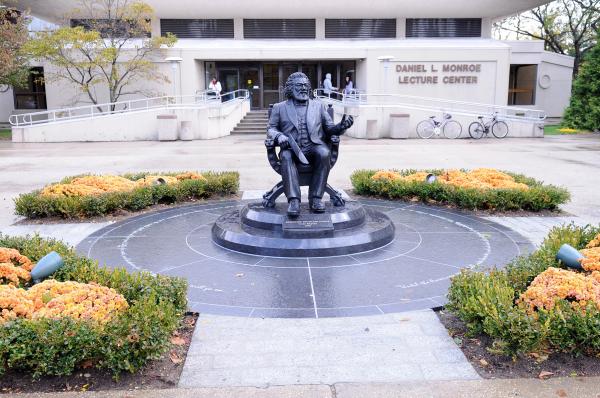
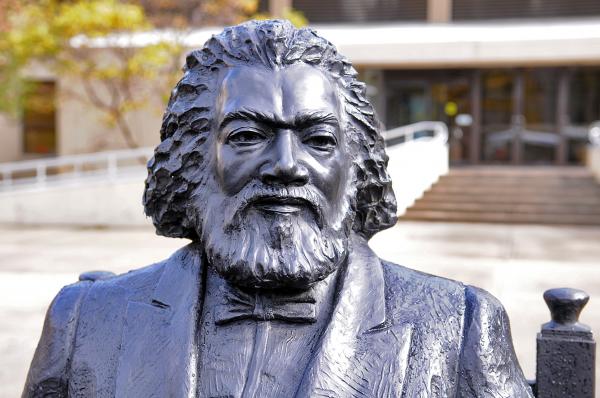
| C
I
R
C
L
E |   2010 - Statue (by Gabriel Koren) and memorial (designed by Algernon Miller) of Douglass were unveiled at Frederick Douglass Circle at the northwest corner of Central Park in New York City, New York (USA). "Although a ceremony was held to name the circle after Frederick Douglass on September 17, 1950, the pedestrian plaza in the center of the intersection was not completed until June 2, 2010. In 1993, local residents & the Central Park Conservancy began developing plans to redesign the circle & make it symmetrical with Duke Ellington Circle at the Northeast corner of Central Park. Construction on the pedestrian plaza began in 2004 & was to be completed in one year. However, due to numerous construction delays, the plaza was not completed until June 2, 2010.
The traffic circle features a complex colored paving pattern that alludes to traditional African American quilt designs. Harlem-based artist Algernon Miller designed the paving. Additional features, including wrought-iron symbolic & decorative elements, a water wall & inscribed historical details & quotations representing the life of Frederick Douglass & the slaves’ passage to freedom. A central bronze sculpture, depicting a standing Frederick Douglass, was crafted by Hungarian-born artist Gabriel Koren."
2010 - Statue (by Gabriel Koren) and memorial (designed by Algernon Miller) of Douglass were unveiled at Frederick Douglass Circle at the northwest corner of Central Park in New York City, New York (USA). "Although a ceremony was held to name the circle after Frederick Douglass on September 17, 1950, the pedestrian plaza in the center of the intersection was not completed until June 2, 2010. In 1993, local residents & the Central Park Conservancy began developing plans to redesign the circle & make it symmetrical with Duke Ellington Circle at the Northeast corner of Central Park. Construction on the pedestrian plaza began in 2004 & was to be completed in one year. However, due to numerous construction delays, the plaza was not completed until June 2, 2010.
The traffic circle features a complex colored paving pattern that alludes to traditional African American quilt designs. Harlem-based artist Algernon Miller designed the paving. Additional features, including wrought-iron symbolic & decorative elements, a water wall & inscribed historical details & quotations representing the life of Frederick Douglass & the slaves’ passage to freedom. A central bronze sculpture, depicting a standing Frederick Douglass, was crafted by Hungarian-born artist Gabriel Koren."
|

| S
T
A
T
U
E |   June 18, 2011 - Frederick Douglass Memorial, Courthouse, Easton, Talbot County, Maryland (USA). A seven-foot bronze statue of Douglass on the lawn of the county courthouse. He was born between Hillsboro & Cordova in Talbot County in February 1818. June 18, 2011 - Frederick Douglass Memorial, Courthouse, Easton, Talbot County, Maryland (USA). A seven-foot bronze statue of Douglass on the lawn of the county courthouse. He was born between Hillsboro & Cordova in Talbot County in February 1818.
|



|   June 19, 2013 - Statue of Frederick Douglass, US Capitol Building, Washington, DC (USA). "The sculpture of Douglass, completed by the artist Steven Weitzman in 2007, and one of Pierre L’Enfant, both paid for by the District of Columbia, have been sitting at One Judiciary Square [left image]. For years, Congress has wrangled over their placement, interjecting fights over gun laws and voting rights into the debate..." But Congress agreed in September 2012 to allow both statues to be placed in the Capitol building, just NOT in Statuary Hall (where each state has two statues). Right image shows VP Joseph Biden & Congressional leaders during the dedication ceremony. June 19, 2013 - Statue of Frederick Douglass, US Capitol Building, Washington, DC (USA). "The sculpture of Douglass, completed by the artist Steven Weitzman in 2007, and one of Pierre L’Enfant, both paid for by the District of Columbia, have been sitting at One Judiciary Square [left image]. For years, Congress has wrangled over their placement, interjecting fights over gun laws and voting rights into the debate..." But Congress agreed in September 2012 to allow both statues to be placed in the Capitol building, just NOT in Statuary Hall (where each state has two statues). Right image shows VP Joseph Biden & Congressional leaders during the dedication ceremony.
|
Many public schools have been named in his honor.




